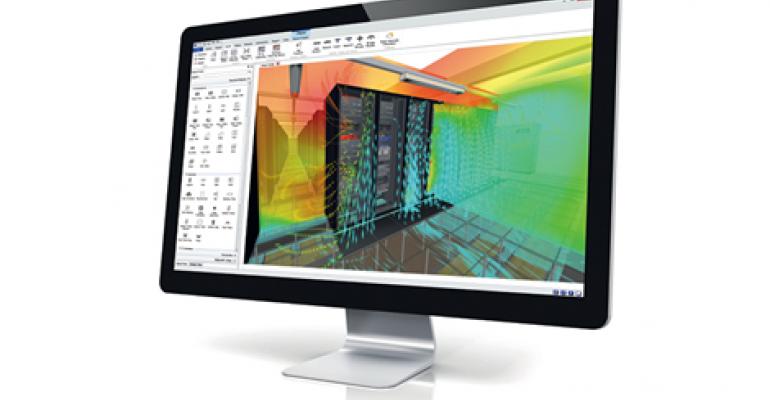Future Facilities has launched a version of its data center modeling software with new user interface that aims to take the “dark art” aspect out of computational fluid dynamics.
Called 6SigmaDCX, the software takes the user through the model building process in logical steps, simplifies access to objects in the model, has tool icons with detailed tool tips, drag-and-drop features, automatic object placement suggestions, and simplified presentation of object properties.
CFD modeling is useful in data center design and management because it helps predict what will happen if a change is introduced to the complex environment where lots of elements depend on and affect each other. It helps answer questions like, how will temperature in different parts of a data hall will be affected if a certain blade chassis is added to a rack?
A Future Facilities 3D model shows the entire data hall layout, including IT racks, air handlers, and power distribution units, and visualizes temperature levels around the room, making it easy to adjust the layout and cooling capacity to avoid hot spots or overcooling.
6SigmaDCX is the new generation of the company’s 6SigmaDC software. With the new user interface, the company hopes to make CFD modeling easier for users who aren’t steeped in thermal dynamics.
The data center modeling software has won accolades from several data center engineering experts, including Vartan Moskifian, critical facilities consultant at HP, Jose Ruiz, director of engineering at Compass Datacenters, and Stuart Hall, sales engineer at Digital Realty Trust.
In a statement, Mark Fenton, product manager at Future Facilities, said, “At a time when data center technology is changing faster than ever, giving more people access to CFD will drive cooling innovation and improve resilience, capacity utilization, and efficiency.”





